When I first laid eyes on a perfectly crafted guitar body template, I knew my days of eyeballing and guesswork were over. That moment marked a turning point in my lutherie journey, transforming my approach to precision and consistency. But little did I know how deep the rabbit hole of templates would go.
As a luthier with an engineering background spanning nearly three decades, I’ve come to appreciate the intricate dance between art and science in guitar making. Guitar body templates are the unsung heroes of this craft, bridging the gap between vision and reality. They’re not just patterns; they’re the DNA of your instrument, dictating its voice, playability, and aesthetic appeal.
In this guide, I’ll share my hard-earned insights into the world of guitar body templates. From types and uses to resources, we’ll explore how these simple tools can elevate your guitar-building game to new heights. Whether you’re a seasoned luthier or a curious beginner, prepare to unlock the full potential of your craft.
Understanding Guitar Body Templates
Types of Guitar Body Templates
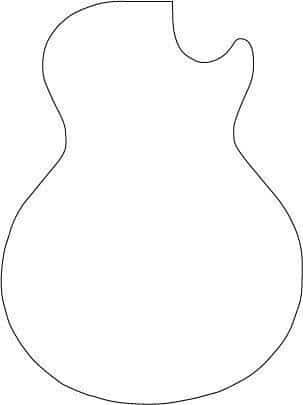
In my experience, guitar body templates come in various forms, each with unique benefits. MDF guitar templates have been my go-to for years due to their durability and cost-effectiveness. They’re perfect for repeated use and maintain their shape well. However, they can be susceptible to moisture damage if not properly stored.
Acrylic guitar templates offer superior clarity, allowing for precise markings and easy tracing. I’ve found them particularly useful when working with intricate designs or when I need to visualize the final product more clearly. For those embracing technology, CAD guitar templates provide unparalleled accuracy and flexibility. I’ve increasingly relied on CAD templates for complex custom designs and rapid prototyping. Each type serves a specific purpose in my workshop, and understanding their strengths has been crucial in refining my craft over the years.
Importance of Templates in Guitar Building

As a luthier and researcher, I’ve learned that precision in body shape is paramount for optimal sound quality. My work in instrument acoustics, as published in the American Lutherie journal, has consistently shown that even minute variations in guitar body contours can significantly affect tonal characteristics. This is where templates for guitar building become indispensable. They ensure accuracy and repeatability, two crucial factors in crafting high-quality instruments.
Routing templates, in particular, have revolutionized my guitar-making process. They allow for consistent and precise cavity cuts, ensuring proper component fit and ideal resonance chambers. By using templates, I’ve been able to refine designs iteratively, making subtle adjustments that yield substantial improvements in sound. Moreover, templates have streamlined my production, enabling me to focus more on the nuanced aspects of guitar building that truly set a masterpiece apart from a mere instrument.
Finding and Obtaining Guitar Body Templates
Downloadable and Printable Options
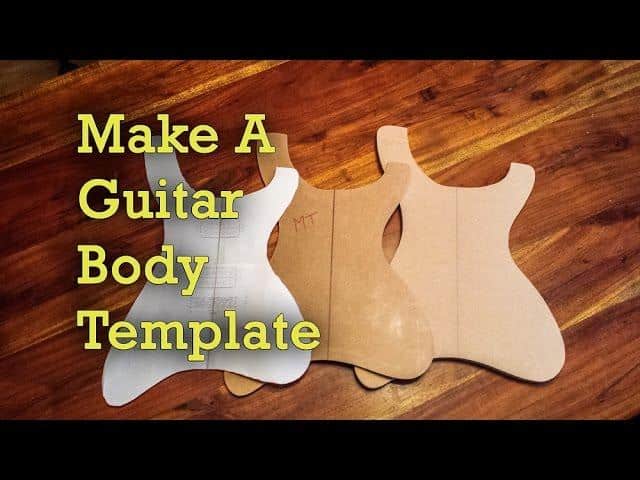
In my role as editor of the Savart Journal, I’ve had the privilege of exploring a wealth of downloadable and printable guitar templates. These digital resources have revolutionized the way luthiers and DIY enthusiasts approach guitar building. I’ve found that guitar template downloads offer unparalleled convenience and accessibility, allowing builders to start their projects almost instantly. Many of the sources we’ve featured in our publications provide high-quality printable guitar templates that can be easily scaled to full size. What I particularly appreciate about these digital options is their versatility – you can modify them to suit your specific needs or print multiple copies for experimentation. From my experience, websites like TDPRI and ProjectGuitar offer some of the most comprehensive collections of downloadable guitar templates, catering to various styles and skill levels.
Purchasing Pre-made Templates
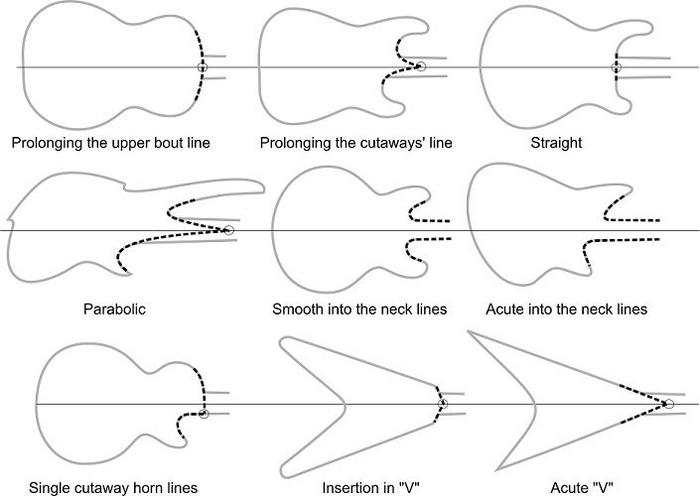
When it comes to purchasing pre-made templates, I’ve found that quality and accuracy are paramount. Through my connections in the New England Luthiers group, I’ve gained valuable insights into reputable suppliers of custom guitar templates and guitar template plans. These pre-made options offer a convenient solution for both novice and experienced luthiers. I typically recommend seeking out templates made from durable materials like acrylic or MDF, which ensure longevity and precision. It’s crucial to verify the template’s compatibility with your chosen guitar style and scale length. Many suppliers offer both physical and digital versions, catering to different preferences and project needs. While pre-made templates may cost more upfront, they often save significant time and potential errors in the long run, making them a worthwhile investment for serious guitar builders.
Using Guitar Body Templates
Preparing Your Workspace

As a luthier with an engineering background, I’ve learned that preparing your workspace is crucial for effective template use. I start by clearing a large, flat surface, ensuring it’s clean and level. My luthier tools are always within reach, organized on a nearby pegboard. I keep a dedicated area for template storage, protecting them from damage and warping.
Proper lighting is essential, so I’ve installed adjustable LED lamps to eliminate shadows. I also use a self-healing cutting mat to protect both my work surface and template edges. A comfortable stool at the right height helps maintain precision during long sessions. By creating this efficient environment, I’ve significantly improved my accuracy and productivity when working with guitar body templates.
Applying Templates to Your Project
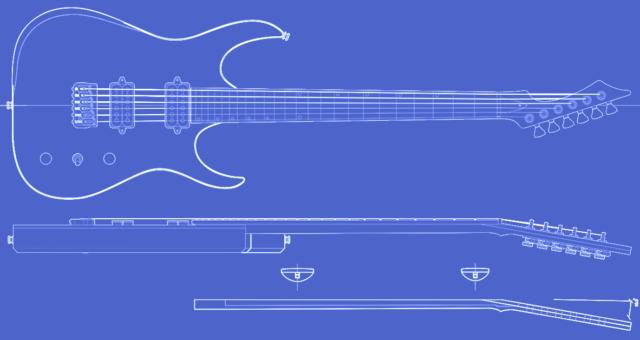
When it comes to applying templates to your project, precision is key. I’ve found that securing the template to your wood blank with removable spray adhesive ensures it won’t shift during tracing. For electric guitar templates, I always double-check the bridge and pickup locations before cutting. With bass guitar templates, pay extra attention to the scale length and string spacing.
After years of practice, I’ve learned that a sharp pencil or fine-tipped marker works best for tracing. I carefully follow the template’s contours, taking my time around curves and cutaways. For complex designs, I sometimes use carbon paper to transfer the template directly. Remember, the template is your roadmap – the more accurately you apply it, the smoother your build will be. Once traced, I remove the template and verify all markings before proceeding to the cutting phase.
Common Guitar Body Styles and Their Templates
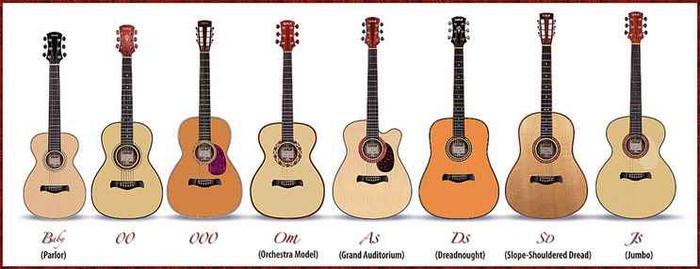
In my years of studying instrument ergonomics, I’ve come to appreciate the intricate relationship between a guitar’s shape and its performance. From the curvaceous Stratocaster to the angular Explorer, every iconic guitar shape has a story. But which ones stand the test of time, and why? This question has driven my research, leading me to explore a vast array of electric guitar templates and bass guitar templates.
The Stratocaster’s double-cutaway design, with its comfortable contours, has become a blueprint for countless electric guitars. Through my studies, I’ve found that this shape not only provides excellent upper fret access but also contributes to the instrument’s distinctive tonal characteristics. In contrast, the Les Paul’s single-cutaway body offers a different playing experience, with its weight distribution favoring sustained notes and a warmer sound profile.
Bass guitars present their own unique challenges. The long-scale Precision Bass template, with its offset body, has proven to be ergonomically sound for extended playing sessions. My research has shown that this design effectively balances weight and accessibility, crucial factors for bassists who often stand for hours during performances.
These classic shapes continue to influence modern designs, but innovation never stops. I’ve observed how contemporary luthiers experiment with hybrid templates, combining elements from different styles to create instruments that push the boundaries of both form and function.
Tips for Creating Custom Guitar Body Templates
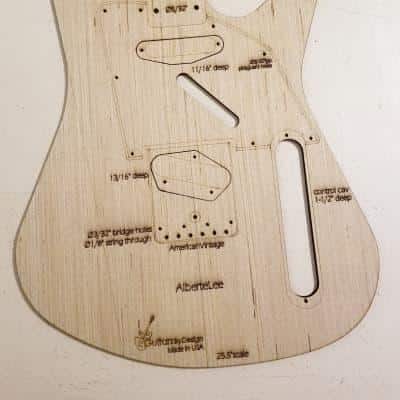
As a seasoned guitar builder and engineer, I’ve learned that creating custom guitar body templates is both an art and a science. The key lies in balancing form with function. What if you could combine the ergonomics of a Stratocaster with the tone of a Les Paul? Welcome to the world of custom guitar body design, where imagination meets physics. This fusion of ideas is where the magic happens.
My process begins with sketching. I start with rough outlines, gradually refining the shape while considering factors like weight distribution, resonance, and playability. It’s crucial to think beyond aesthetics and consider how each curve affects the instrument’s performance. Once I’m satisfied with the sketch, I transition to CAD software for precision. This is where my engineering background truly shines.
Using CAD guitar templates allows for minute adjustments and ensures symmetry. I often create multiple iterations, tweaking dimensions by fractions of an inch to achieve the perfect balance. Remember, even small changes can significantly impact tone and comfort. Don’t be afraid to experiment, but always keep the core principles of guitar design in mind. Your custom guitar templates should reflect your unique vision while respecting the instrument’s fundamental needs.
FAQs
What are guitar body templates?
What types of guitar body templates are available?
1. Stratocaster
2. Telecaster
3. Les Paul
4. SG
5. Flying V
6. Explorer
7. Acoustic guitar shapes
8. Bass guitar templates
These templates cover a wide range of popular guitar styles and designs.
What are the primary uses of guitar body templates?
1. Designing and building custom guitars
2. Repairing or modifying existing guitars
3. Creating mockups or prototypes
4. Ensuring consistency in guitar manufacturing
5. Educational purposes in luthiery courses
6. Planning guitar finishes and artwork
Where can I find guitar body templates?
1. Online guitar building forums and communities
2. Luthier supply websites
3. Guitar building books and magazines
4. CAD file sharing platforms
5. Professional template manufacturers
6. DIY guitar building kits
7. Guitar manufacturer websites (some offer official templates)
What materials are used for guitar body templates?
1. Acrylic or plexiglass
2. MDF (Medium-density fiberboard)
3. Hardboard
4. Thin plywood
5. Heavy-duty paper or cardstock (for disposable templates)
6. 3D printed plastic
The choice of material depends on durability requirements and intended use.
How do I use a guitar body template?
1. Select your wood blank for the guitar body
2. Secure the template to the wood using double-sided tape or screws
3. Trace the outline of the template onto the wood
4. Cut along the traced line using a bandsaw or jigsaw
5. Sand the edges to smooth out any imperfections
6. Use the template to mark locations for bridge, pickups, and other components
Always follow proper safety procedures when working with power tools.
Conclusion
As we wrap up our journey through the world of guitar body templates, ask yourself: are you ready to transform a simple piece of wood into a work of musical art? Reflecting on my journey from engineering to lutherie, I’ve come to see templates as the bridge between precise design and artisanal craftsmanship. They’re not just tools; they’re the foundation of every great guitar.
Guitar body templates are indispensable for any serious luthier or guitar enthusiast. They ensure consistency, save time, and allow for experimentation without compromising quality. Whether you’re crafting your first instrument or your hundredth, a well-made template for guitar building is your blueprint for success. From classic shapes to custom designs, these templates empower us to bring our musical visions to life. As you embark on your own guitar-building adventure, remember that each template holds the potential for a masterpiece. Embrace the precision, unleash your creativity, and let your passion for lutherie resonate in every curve and contour.